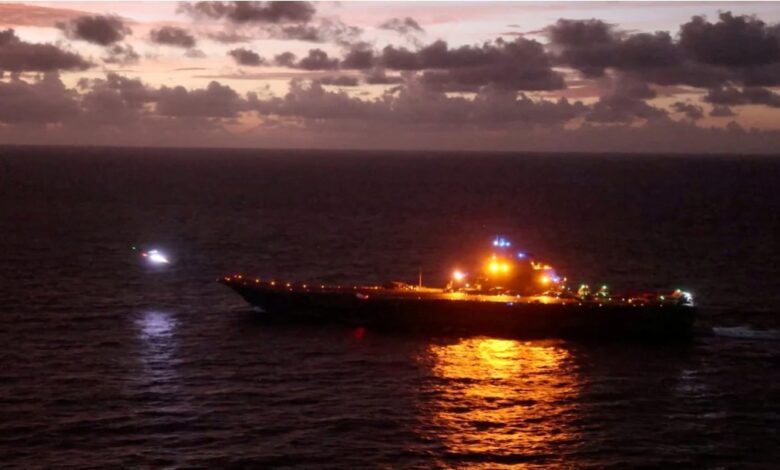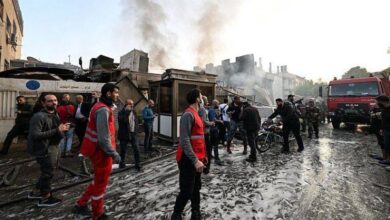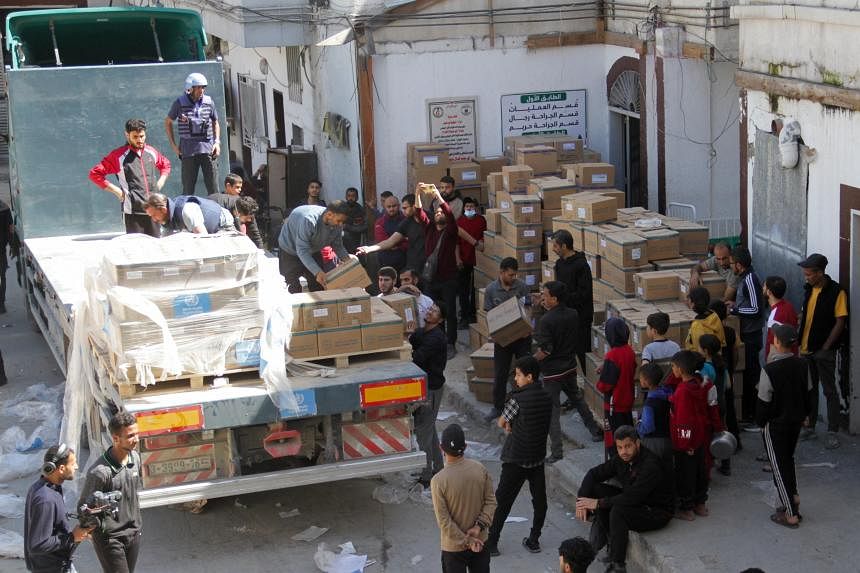Cold War Bomber Enhances China’s Ability to Strike US Bases

In a series of war games in the seas and skies around Taiwan last month, China deployed some of its newest strike aircraft, warships and missile forces. However, one of the most menacing weapons used in the drills: an updated version of a bomber that first flew in the early years of the Cold War.
Like America, which still relies on upgraded versions of the B-52, a bomber from the same era, China has successfully modernized its jet-powered H-6 to carry on flying deep into the 21st Century.
These bombers were shown on China’s state-controlled media taking off for missions designed to intimidate Taiwan as part of the war-game drills. Dubbed Joint-Sword 2024B by China’s military, the maneuvers were a “[USN:L4N3LP04Q TEXT:“stern warning”]” to people on Taiwan seeking independence, the Chinese military said.
Taiwan’s Ministry of National Defense reported that 153 Chinese military aircraft, 14 naval vessels and 12 other ships were detected around the island over a 25-hour period after the start of the exercise on Oct. 14. The ministry also reported that 111 of the aircraft had crossed the median line of the Taiwan Strait and entered the island’s Air Defense Identification Zone (ADIZ).
Taiwan’s defense ministry told Reuters that “three groups of three H-6 aircraft” had been detected operating in the island’s air space during China’s military exercise. Two of the groups “conducted simulated attack drills,” the ministry said.
China’s defense ministry didn’t respond to questions for this story.
Some modernized versions of China’s H-6 bomber are now capable of launching ballistic missiles armed with nuclear warheads while others can carry multiple long-range anti-ship and land attack missiles, according to defense analysts and Pentagon reports on the Chinese military. Some versions can be refueled in flight, allowing them to fly from bases on the Chinese mainland and strike at targets deep into the Western Pacific, where the U.S. has large bases on Guam and elsewhere.
Asked about the military drills, Taiwan’s defense ministry said the island was using “joint intelligence surveillance to keep track of the communist military’s movements around Taiwan,” while also dispatching “air, sea and missile forces to respond as appropriate to ensure national defense and security.”
Major Pete Nguyen, a Pentagon spokesperson, said the U.S. was “prepared to respond to any threat and protect the homeland.” U.S. Defense Secretary Lloyd Austin “has often said that he does not believe conflict with the PRC is imminent nor inevitable,” Nguyen said in response to questions.
Beijing says that Taiwan is part of China and has not ruled out the use of force to bring the island under its control. The leaders of democratically governed Taiwan reject these sovereignty claims.
China’s military capabilities are in the spotlight as tensions with the U.S. remain high with Donald Trump returning to office. In a display of its growing military prowess, [USN:L4N3MF0B5 TEXT:“China put its J-35A stealth fighter on display”] at the Zhuhai air show this week.
SERIOUS THREAT
Unlike America, which stopped building the B-52 in 1962, China has continued to make the twin-engine H-6 at a plant in central China. However, H-6 production may have recently slowed or been halted, according to Thomas Shugart, a former U.S. Navy submarine officer and an expert on China’s military. He estimates the Chinese air force now has about 230 of these bombers.
The H-6 is derived from the Tupolev Tu-16 bomber, which the Soviet Union introduced into service in the early 1950s and was given the NATO code name Badger. China began building these aircraft under license in the late 1950s, according to experts on the People’s Liberation Army, China’s military.
The Taiwanese and Japanese militaries have reported that H-6 bombers have been frequently deployed on flights near their airspace in recent years. They are also sent on flights over the South China Sea where Beijing claims sovereignty over extensive areas of disputed territory.
In a conflict, these bombers would pose a serious threat to ships and targets on land, according to U.S. and Taiwanese military experts.
Shugart said that Chinese military doctrine for island landing campaigns, such as an invasion of Taiwan, calls for strikes against headquarters, communications facilities, logistics centers and other key targets, along with attacks on airfields, ports and ships at sea. “I would expect H-6s to be involved in all of these sorts of operations,” he said.
These attacks would likely be coordinated with missile strikes, possibly without warning, that would soften air defenses and crater runways to trap aircraft on the ground, Shugart added. He said these aircraft could then be hit with cruise missiles launched from H-6 bombers.
China’s official media in mid-September provided some insight into the role the H-6 might play in a clash off the Chinese coast.
State broadcaster CCTV showed footage of one of these bombers flying in an exercise with fighters and a long-range WZ-7 surveillance drone. The drone penetrated the air defenses of a potential adversary, identified a target and relayed this information to the H-6, according to the footage. The bomber was shown launching an anti-ship missile.
Experts say the U.S. should try to neutralize the H-6 bombers while they are still on the ground. “Any common sense war plan would target those aircraft before they could take off,” said David Deptula, dean of the Washington-based Mitchell Institute for Aerospace Studies and a retired U.S. Air Force Lieutenant General.
In March testimony to the U.S.-China Economic and Security Review Commission, Shugart said China’s H-6 force has expanded and these aircraft now have improved airframes, technology, engines and long-range weapons.
While regularly sending the H-6 on missions off the Chinese coast, Beijing is now deploying these aircraft in the same way the U.S. Air Force uses long-range patrols of the B-52 and its other bombers to signal America’s ability to strike at distant targets.
On July 24, American and Canadian fighter jets scrambled to intercept a joint patrol of two Chinese H-6 and two Russian Tu-95 bombers near Alaska, according to a statement from the North American Aerospace Defense Command (NORAD).
While the Russians conduct regular patrols in this area, it was the first time Chinese bombers had flown close to the U.S. mainland in an operation that revealed the growing power and confidence of China’s military, according to former U.S. air force officers.
The flights were not seen “as a threat, and NORAD continues to monitor competitor activity near North America and meet presence with presence,” Pentagon spokesperson Nguyen said.
The Chinese and Russian defense ministries didn’t respond to a request for comment.
A spokesman for China’s Ministry of National Defense, Senior Colonel Zhang Xiaogang, told a press conference at the time that the joint patrol was to test and improve coordination between the Chinese and Russian air forces. “This operation does not target any third party,” Zhang said.
REUTERS




